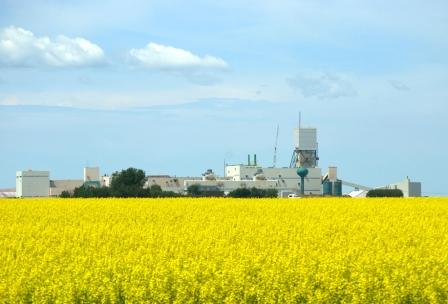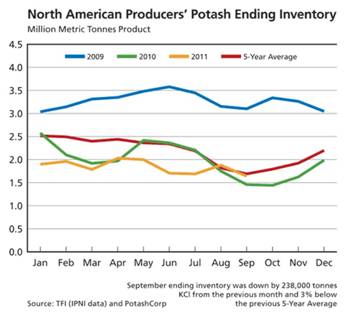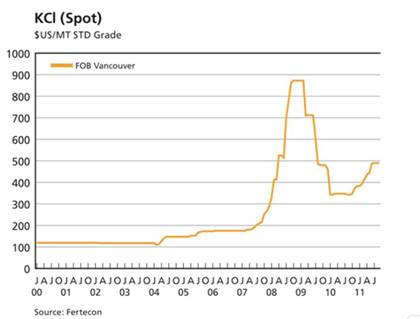
Higher crop yields are needed in order to feed today’s global population of seven billion so strong fertilizer prices are sustainable. Over the next fifty years, as we add another 4.5 billion people to the world’s population, global demand for food will increase almost 70% if population growth predictions are correct. The sheer amount of people being born every year, the loss of arable land and the change of diet among a newly prosperous, urban population in developing countries are the most important factors stoking the rise in global food demand.
As demand for food rises, so does the requirement for crop nutrients. Potash has unique characteristics:
- High-quality, economically viable deposits are rare;
- Major offshore markets have little or no indigenous production capability;
- Barriers to entering the business are significant;
- Potash has been historically under applied relative to nitrogen and phosphate; and,
- Limited new operational capability is expected.
A rising income means more money in the household budget. The new middle class consumers forgo plant based calories in favor of adding more protein from meat and dairy products to their diets. It takes up to eight kilograms of grain to produce one pound of beef – less for pork, chicken, milk or eggs – between 2kg and 6kg. As meat consumption soars, more grain is needed to feed more livestock. In 1995, the Chinese ate an average of 25kg of meat per person, by 2007, the Chinese were consuming 53kg of meat per person.
Enlarging and diversifying the meat supply is a first step for every developing country. In 1980, the world ate 133 million tonnes of meat and drank 342 million tonnes of milk. By 2002, consumption had increased to 239 million tonnes of meat and 487 million tonnes of milk. The United Nations Food and Agriculture Organization (FAO) estimates that by 2030 global annual consumption of meat will stand at 373 million tonnes and 736 million tonnes of milk.
Potash Corporation of Saskatchewan Inc. (TSX:POT & NYSE:POT), the world’s largest fertilizer producer by market value, doubled its third quarter earnings, reporting 94 cents per share or $826 million compared to 38 cents per share or $343 million a year ago. During the first nine-months of 2011, the company’s earnings have doubled from $1.39 per share during the same period last year to $2.73 per share today. Net income of US$826 million was the second highest Q3 profit in the company’s history – gross margin reached US$1.1-billion. Potash production was 1.9 million tonnes, a third quarter record for Potash Corp.

The company said demand was strong from both North American and international customers. “Crop prices remained at historically high levels [in the third quarter] and farmers continued to strive for increased production to capitalize on the economic opportunity in agriculture. As a result, demand for our potash, phosphate and nitrogen products remained strong,” commented Bill Doyle chief executive of Potash Corp. Global grain stocks remain at extremely low levels. Potash Corp. said at the beginning of the year that it would take two years of record harvests to get inventories back to comfortable levels, 2011 has been referred to as a lost year.
According to figures compiled by Bloomberg potash prices averaged 27 percent higher in the third quarter compared with a year earlier. There may be room for more upside, the cost of fertilizer as a percentage of corn revenue is 13%, 18% is the norm.
“Global potash prices have surged in 2011, driven by a tight global supply/demand balance, and with producers heavily committed through year-end, we view current price levels as being sustainable.” Don Carson, analyst, Susquehanna Financial Group.





 Follow us on Twitter
Follow us on Twitter Become our facebook fan
Become our facebook fan










Comments are closed.